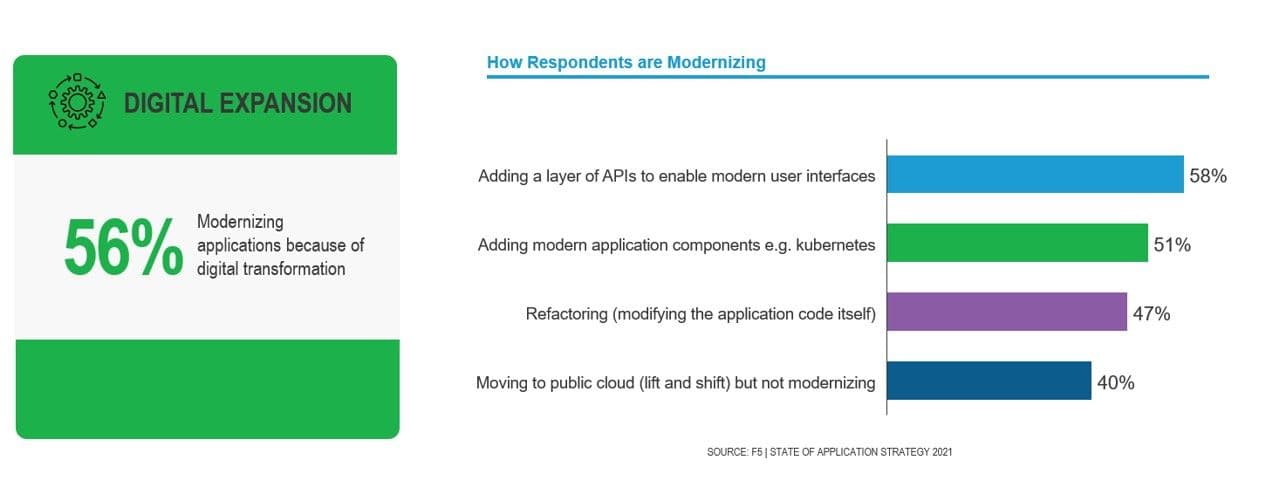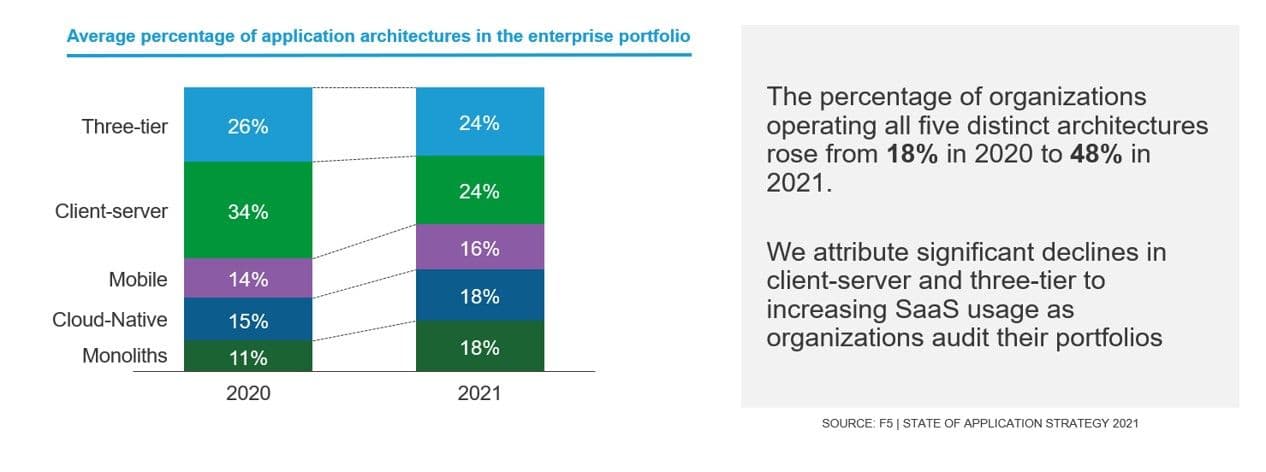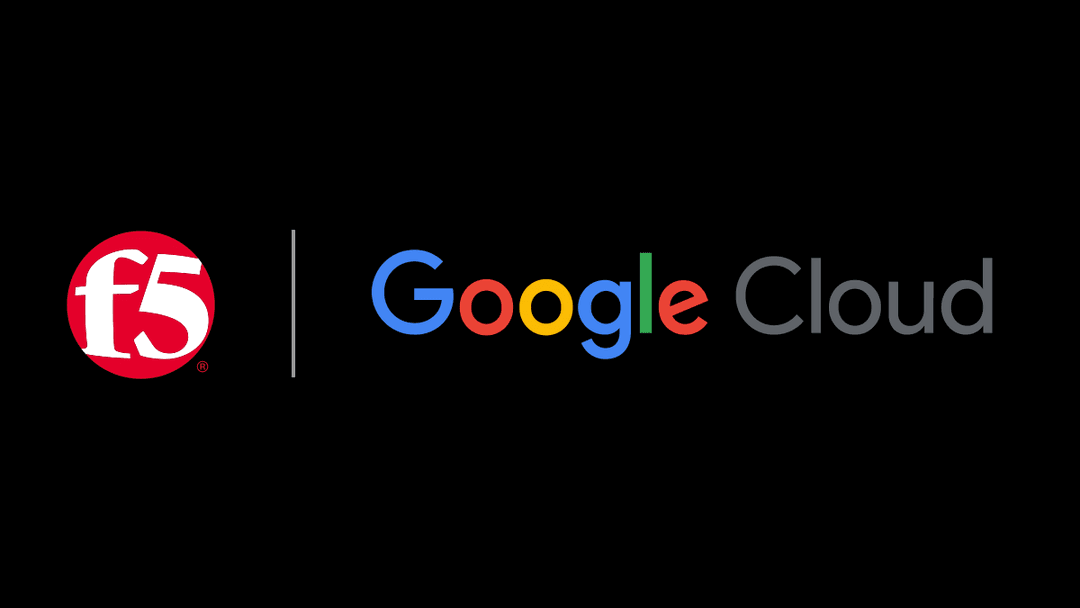When We (that’s the corporate We) talk about digital transformation we use a framework consisting of three phases. This framework maps the technology evolution that accompanies the business journey from physical to digital models. Each phase is marked by a business initiative that is enabled by technology.
The second phase, Digital Expansion, is marked by modernization. In this phase, business is expanding its digital presence. The most obvious of these efforts is seen in the digital experiences offered online but is not restricted to websites and mobile apps. This phase includes digitization of products and is in part the cause of a rise in the rapid increase in “connected” devices and the apps that operate them that create the urgent need for an Edge 2.0 platform.

Which is why the term modernization has ramifications beyond that of a new website. Modernization is how organizations create seamless experiences that span products and processes. Based on our research, a lot of enterprises are doing it.
Modernization Mania
Over half (56%) of respondents told us they are modernizing applications because of digital transformation initiatives. Modernization is necessary because many of the monoliths the enterprise relies upon for core business functions can’t present the kind of interface consumers expect.
Modernization is not a new idea. Organizations have been modernizing monoliths since before I was in college. The significant contribution to the enterprise app portfolio by client-server and three-tier web apps are a testament to modernization. Many of these apps were created solely to provide access to existing, monolithic core business applications. Today, the growth of mobile and container-native applications can be attributed, in part, to modernization.
Indeed, the data bears this out. Organizations are primarily modernizing applications by extending them with more modern counterparts—container-native apps and APIs.

When we dig into some data on the deployment of applications in containers, we see the impact of modernization. Those organizations operating in the latter phases of digital transformation are twice as likely to be running more than half their application portfolio in containers.
Modernization Impacting the Application Portfolio
We also see a significant shift in the enterprise portfolio. Not a dramatic increase in mobile and container-native applications, but a serious decrease in the percentage of aging, traditional applications. Both client-server and three-tier web applications make up a much smaller part of the enterprise portfolio this year.
A rarely talked about but essential activity of modernization is a portfolio audit. These audits discover duplicated functions that can be eliminated as well as business applications that can now easily be replaced by a comparable SaaS offering. Certainly, some of the growth in modern applications can be attributed to modernization, but there is a greater impact on the portfolio from organizations cleaning up and streamlining their portfolio.

Methods Are Mostly Additive
While refactoring remains one of the most loved terms in technology marketing today, the data tells us it is not the most popular means of modernizing applications—unless you’re a technology company.
When we looked at how enterprises were modernizing, we discovered that nearly half (44%) were using only APIs (61%) or modern components (54%) to expand the digital presence of their portfolio. Companies in financial services, utilities, manufacturing, and telecommunications were all more than twice as likely to use APIs or modern components over refactoring.
This should not be surprising. Though many technologies are considered quite old by technology standards, firms operating in well-established and mature industries have been operating applications for longer than I’ve been alive. That’s a long time, I’m not ashamed to say. Thus, the cost and effort to refactor core applications is significantly higher than it would be for a relatively young technology company.
Still, it’s good to note that all four methods of modernization—including lift and shift to the public cloud—are on the table when organizations modernize. Reduce, reuse, and recycle would work well for an application modernization strategy:
- Reduce the number of applications in the enterprise portfolio with a thorough audit. Eliminate redundancies and adopt SaaS equivalents when possible.
- Reuse proven, traditional apps by extending them with APIs and modern components that enable seamless digital experiences and connectivity to third-party ecosystems.
- Recycle existing logic by refactoring into new applications, effectively modernizing access and operational models to improve the speed with which new features and security measures can be delivered.
The Implications of Modernization
Long term readers will recognize at this point that changes in application architectures have significant impacts on every other technology and, in particular, application delivery and security technologies (the technologies formerly known as application services).
But it isn’t just the changes in application architectures that are driving change across the technology spectrum. The way in which applications are being stitched together to deliver seamless digital experiences is disrupting existing methods of monitoring and giving rise to a new kind of analytics. Automation and orchestration are critical capabilities needed to manage the increasingly multi-cloud portfolio, and organizations are struggling with the tools they need to do it.
There’s more, of course, and we’ll dig deeper as we continue to explore the State of Application Strategy 2021. In the meantime, be sure to check out more about modernization in this year’s report.
About the Author

Related Blog Posts

Architecting for AI: Secure, scalable, multicloud
Operationalize AI-era multicloud with F5 and Equinix. Explore scalable solutions for secure data flows, uniform policies, and governance across dynamic cloud environments.

Rein in API sprawl with F5 and Google Cloud
Find out how F5 and Google Cloud can help you secure and manage your ever-increasing API integrations.

Nutanix and F5 expand successful partnership to Kubernetes
Nutanix and F5 have a shared vision of simplifying IT management. The two are joining forces for a Kubernetes service that is backed by F5 NGINX Plus.

AppViewX + F5: Automating and orchestrating app delivery
As an F5 ADSP Select partner, AppViewX works with F5 to deliver a centralized orchestration solution to manage app services across distributed environments.
F5 NGINX Gateway Fabric is a certified solution for Red Hat OpenShift
F5 collaborates with Red Hat to deliver a solution that combines the high-performance app delivery of F5 NGINX with Red Hat OpenShift’s enterprise Kubernetes capabilities.
Phishing Attacks Soar 220% During COVID-19 Peak as Cybercriminal Opportunism Intensifies
David Warburton, author of the F5 Labs 2020 Phishing and Fraud Report, describes how fraudsters are adapting to the pandemic and maps out the trends ahead in this video, with summary comments.
